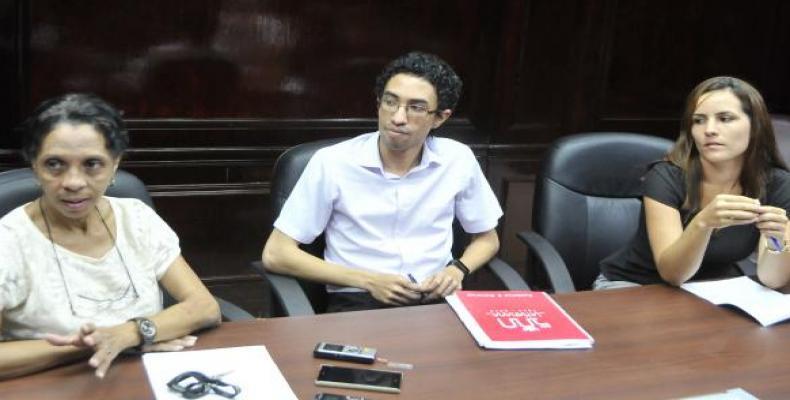Towards monetary and exchange rate unification in Cuba
Havana, August 20 (RHC)-- Under the title Unificación monetaria en el horizonte de Cuba (Monetary Unification on the Cuban Horizon), Granma newspaper published Thursday the opinions of three Central Bank experts, who discussed the urgency of the implementation of this decision.
To put the perspective into context, the Director of Economic Studies of the Central Bank, Mercedes Garcia, recalled the hard blow that the Cuban economy received in the 1990s due to the demise of the Soviet Union and the socialist camp which led to a fall of almost 35 percent of the island's Gross Domestic Product.
The fiscal deficit also soared, and the US blockade was tightened, generating a shortage of products in the retail markets and triggering strong monetary imbalances, explained Garcia.
This situation generated a process of repressed inflation in which the money in the hands of citizens outgrew the availability of goods and services.
The Cuban peso lost its buying power in an accelerated way, as well as its functions as a means of exchange, as a reserve of value and as a currency unit, Mercedes Garcia explained. She added that the context enabled the conditions for a de facto dollarization, which took shape in the informal market.
Garcia added that the US dollar then assumed the monetary functions of the Cuban peso, and recalled that the exchange rate reached around 150 pesos per one greenback.
In 1993, Cuban authorities adopted a group of measures designed to reactivate the economy, reinsert it into the international market and tackle the macroeconomic imbalances that arose, procedures that were discussed in the National Assembly, the Cuban parliament.
Among the most important decisions adopted were the decriminalization of the use and possession of the US dollar for Cubans and the opening of stores to collect foreign currency.
The Director of Economic Studies of the Central Bank, Mercedes Garcia, noted that dollarization never covered the entire Cuban economy since salaries, social security and assistance, services, rationed products and many other activities remained in pesos.
To clean up internal finances, in 1994 certain free services and subsidies were eliminated, and in December that year, the convertible peso was introduced for transactions in the commercial network that operates in foreign currency.
The economic recovery allowed the beginning of the removal of the dollar from circulation, first in the business sector, and in 2003 it was eliminated from inter-company relations and was replaced by the Cuban Convertible Peso, known as CUC.
The following year, the dollar began to be withdrawn as a means of payment for the population, and from that moment on, there were two national currencies, the peso, and the convertible.
Ian Pedro Carbonell, a specialist from the Central Bank's Economic Policy Department, explained to Granma that the phenomenon of duality has underlying problems that need to be urgently addressed.
One of them is the monetary duality itself. Another is the exchange duality, which establishes different rates between national currencies, and between them and foreign currencies, according to the expert, cited in the article published Thursday by Granma newspaper.
These dualities, Carbonell elaborated, generate distortions in the business sector and in the way, people interact.
He illustrated that one problem that requires greater attention is the exchange rate in the business sector, where one Cuban peso equals one dollar, and this is what economists call overvaluation, and slows down productive capacity because it discourages exports and favors imports.
The experts from the Central Bank of Cuba described to Granma the problems generated by the current overvaluation of the peso.
Carbonell added that this situation also has a considerable effect on the operation and the balance sheet of companies, and makes it difficult to measure the economic reality and the effect that incentives should have.
The specialist from the Central Bank's Economic Policy Department pointed out that among the population, difficulties are related above all to the cumbersome processes generated by having to use two national currencies, which has been corrected with the possibility of using both in many facilities.
Carbonell further explained that associated with duality, there is also, in many cases, an internal disconnection between retail and wholesale prices.
In order for the peso to fulfill its functions, there must be an exchange rate that brings supply and demand for foreign currency closer. There must be clear rules for issuing money, and there must be discipline between government revenues and expenditures.
Karina Cruz, a specialist from the Economic Studies Department of the Central Bank, pointed out the necessary coordination required between the agencies in charge of conducting macroeconomic policies, as well as the need to ensure that the peso is not used as a tool to control inflation.
She also added the need for a stable and quality supply of goods and services that can be acquired in pesos, and for the creation of conditions that encourage savings by individuals and companies that can obtain credit in national currency.
The Granma article Under the title Monetary Unification in Cuba's Horizon concluded stating that it is important that those involved in making this ideal environment become a reality for Cuba are properly trained.


